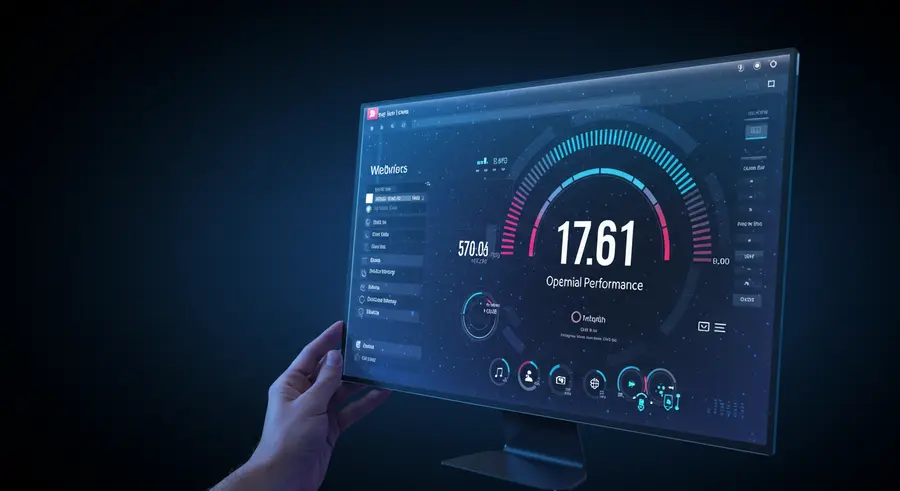Appearance

Welcome, web performance enthusiasts! 👋 In the ever-evolving landscape of web development, speed and responsiveness are no longer just desirable—they are essential. While you might be familiar with Core Web Vitals like Largest Contentful Paint (LCP) and Cumulative Layout Shift (CLS), there's a new kid on the block that's taking center stage: Interaction to Next Paint (INP).
INP, which replaced First Input Delay (FID) in March 2024, is a crucial metric that measures a page's overall responsiveness to user interactions. It observes the latency of all interactions a user has with a page and reports a single value that represents the slowest, or near slowest, interaction. A low INP value indicates that your page is highly responsive, providing a smooth and satisfying user experience.
Why INP Matters More Than Ever
In today's interactive web, users expect immediate feedback. Whether they're clicking a button, typing into a search bar, or opening a navigation menu, any noticeable delay can lead to frustration and a poor user experience. This directly impacts engagement, conversion rates, and even your search engine rankings, as Google increasingly prioritizes user experience.
Think about it:
- User Frustration: A slow response to a click can make users abandon your site.
- SEO Impact: Google considers INP a Core Web Vital, meaning it directly influences your search ranking.
- Business Metrics: Improved responsiveness leads to higher engagement, more pages viewed, and better conversion rates.
Deciphering INP: What's Under the Hood?
INP measures the full lifecycle of an interaction, from the moment a user initiates it to the moment the browser paints the next visual update. This includes:
- Input Delay: The time from when the user interacts until the event callbacks begin to run.
- Processing Time: The time it takes for event callbacks to execute.
- Presentation Delay: The time it takes for the browser to paint the visual update after the event callbacks have finished.
A high INP value typically points to long-running JavaScript tasks blocking the main thread, preventing the browser from responding promptly to user inputs.
Strategies for Mastering INP Optimization
Optimizing INP is an ongoing process that requires a deep understanding of your application's performance characteristics. Here are some key strategies:
1. Minimize CPU Usage on the Main Thread
The main thread is where most of your browser's work happens, including JavaScript execution, style calculations, and layout. Long-running JavaScript tasks can block this thread, leading to high INP values.
- Break Up Long Tasks: Divide complex JavaScript operations into smaller, asynchronous chunks. Use
setTimeout,requestIdleCallback, or the new Scheduler API (scheduler.yield()) to yield control back to the main thread. - Debounce and Throttle Input Handlers: For frequently triggered events like
scrollormousemove, debounce or throttle their handlers to reduce the number of executions. - Web Workers: Offload heavy computational tasks to Web Workers, freeing up the main thread for user interactions.
2. Optimize Event Callbacks
Ensure your event handlers execute as quickly as possible.
- Do Less Work: Minimize the amount of code executed within event callbacks. Defer non-essential operations.
- Avoid Layout Thrashing: Repeatedly reading and writing to the DOM can cause layout thrashing (forced synchronous layouts), which is a major performance killer. Batch DOM reads and writes, and use tools like
requestAnimationFramefor animations. - Efficient CSS: Complex CSS selectors and large style recalculations can slow down rendering. Optimize your CSS for performance.
3. Prioritize Visual Feedback
Even if the underlying task is long-running, providing immediate visual feedback to the user can significantly improve the perceived responsiveness.
- Instant Visual Cues: For actions that might take a moment, provide immediate visual feedback like loading spinners, progress bars, or subtle animations. This acknowledges the user's interaction and reduces perceived latency.
4. Image and Asset Optimization
While not directly an INP factor, overall page performance greatly influences the main thread's availability.
- Lazy Loading: Load images and other assets only when they are needed.
- Responsive Images: Serve appropriately sized images for different devices.
- Modern Formats: Use modern image formats like WebP or AVIF.
5. Monitor and Iterate
INP optimization is not a one-time fix. It requires continuous monitoring and iteration.
- Field Data: Gather real-user monitoring (RUM) data for INP to understand how your actual users experience your site.
- Lab Tools: Use tools like Chrome DevTools, Lighthouse, and PageSpeed Insights for detailed performance audits and to identify bottlenecks.
- Integrate into CI/CD: Make performance a part of your development workflow.
Further Reading and Resources
To dive deeper into web performance optimization, especially beyond the initial Core Web Vitals, check out our catalogue page on Optimizing Core Web Vitals.
By embracing these strategies and continually monitoring your site's performance, you can ensure a lightning-fast and highly responsive web experience for your users, keeping them engaged and happy! 🚀